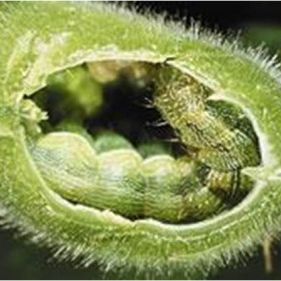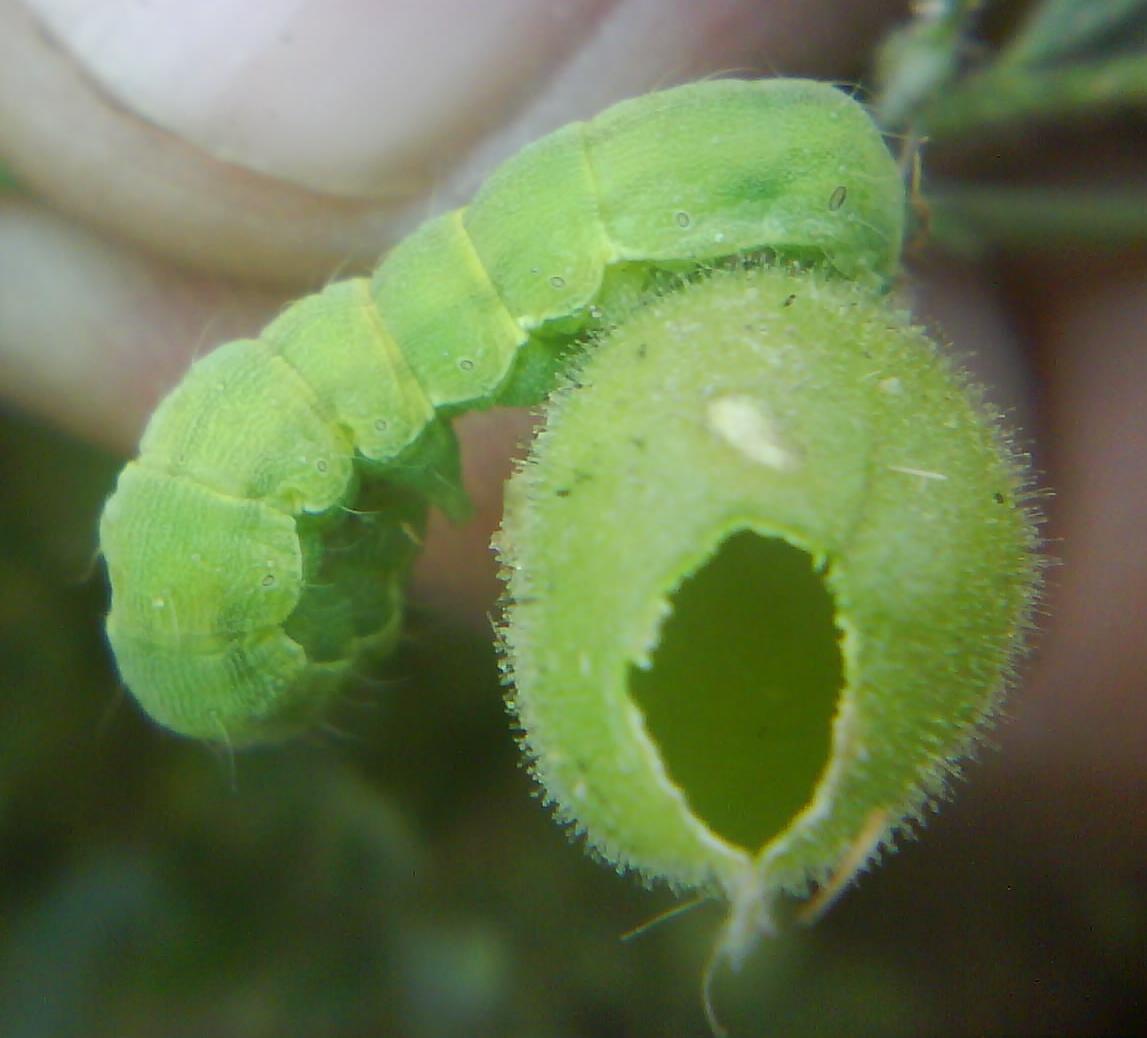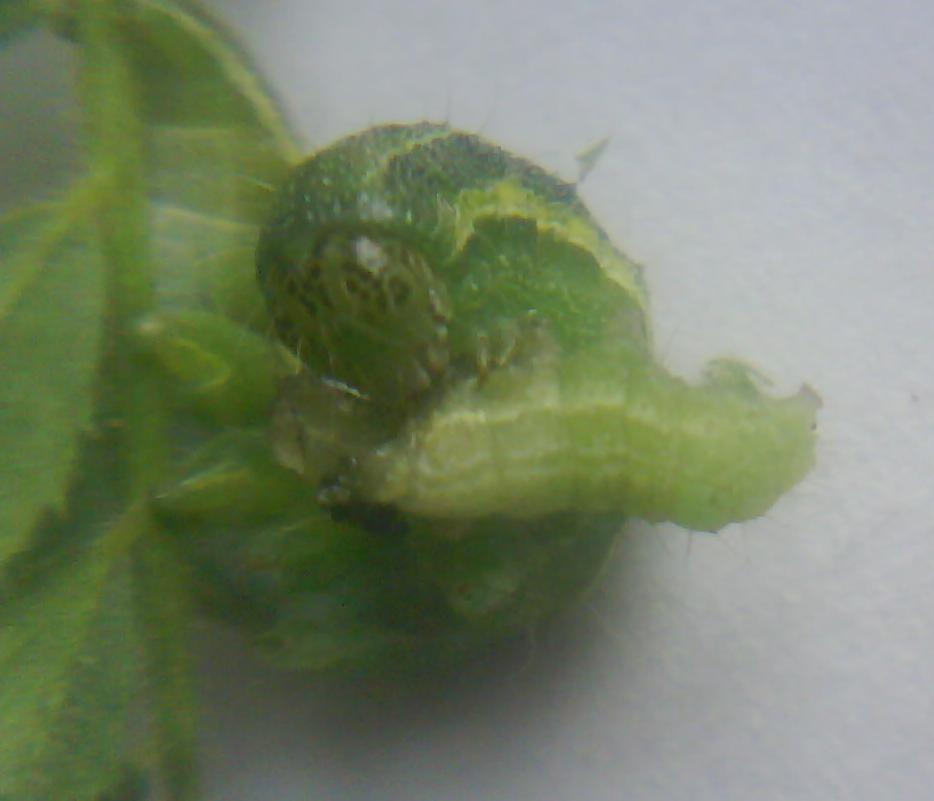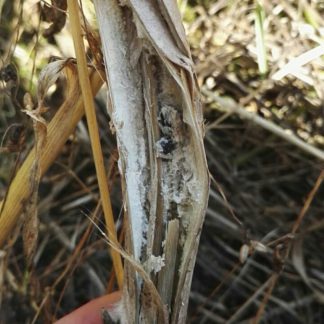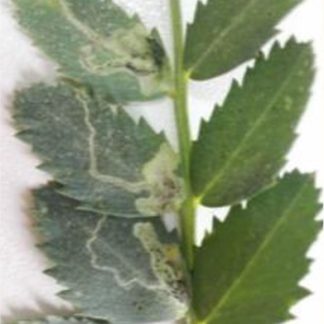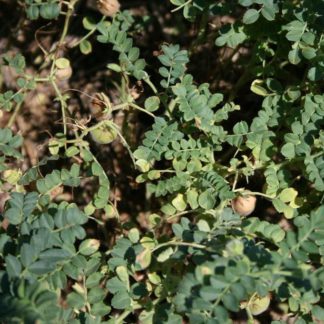Pod borers
Caused by: Helicoverpa armigeraProblem Category: Insect
Symptoms: Young larvae feed on foliage initially; young chickpea plants may be completely destroyed; older larvae bore into seed pods and consume seeds; insect frass (feces) may be present outside the feeding holes
Comments: Helicoverpa armigera is widely distributed in Asia, Africa, Australia, and the Mediterranean; also a pest of cotton, pigeonpea, sunflower, tomato, maize, sorghum, pearl millet, okra, beans, tobacco, linseed and a number of fruit trees; Helicoverpa punctigera is a major pest of chickpea in Australia
Management: The insect can be very damaging in the areas where it occurs and plants should be monitored carefully for presence of larvae; identifying the species of Helicoverpa present can be important for management decisions as H. armigera is resistant to some insecticides (particularly synthetic pyrethroids), while H. punctigera is susceptible to all insecticides; small larvae should be distinguished with the use of a hand lens or microscope; young H. armigera larvae have a distinctive saddle on the fourth body segment which is absent from the larvae of H. punctigera (see image); older larvae can be distinguished by the color of the hairs behind the head - H. armigera possess white hairs, while H. punctigera have black hairs; both types of larvae may also be controlled organically via release of natural enemies which parasitize the larvae and the application of Bacillus thuringiensis
Control: Spary the chiili garlic extract or 5% Neem seed kernal extract to control pod borer damage

